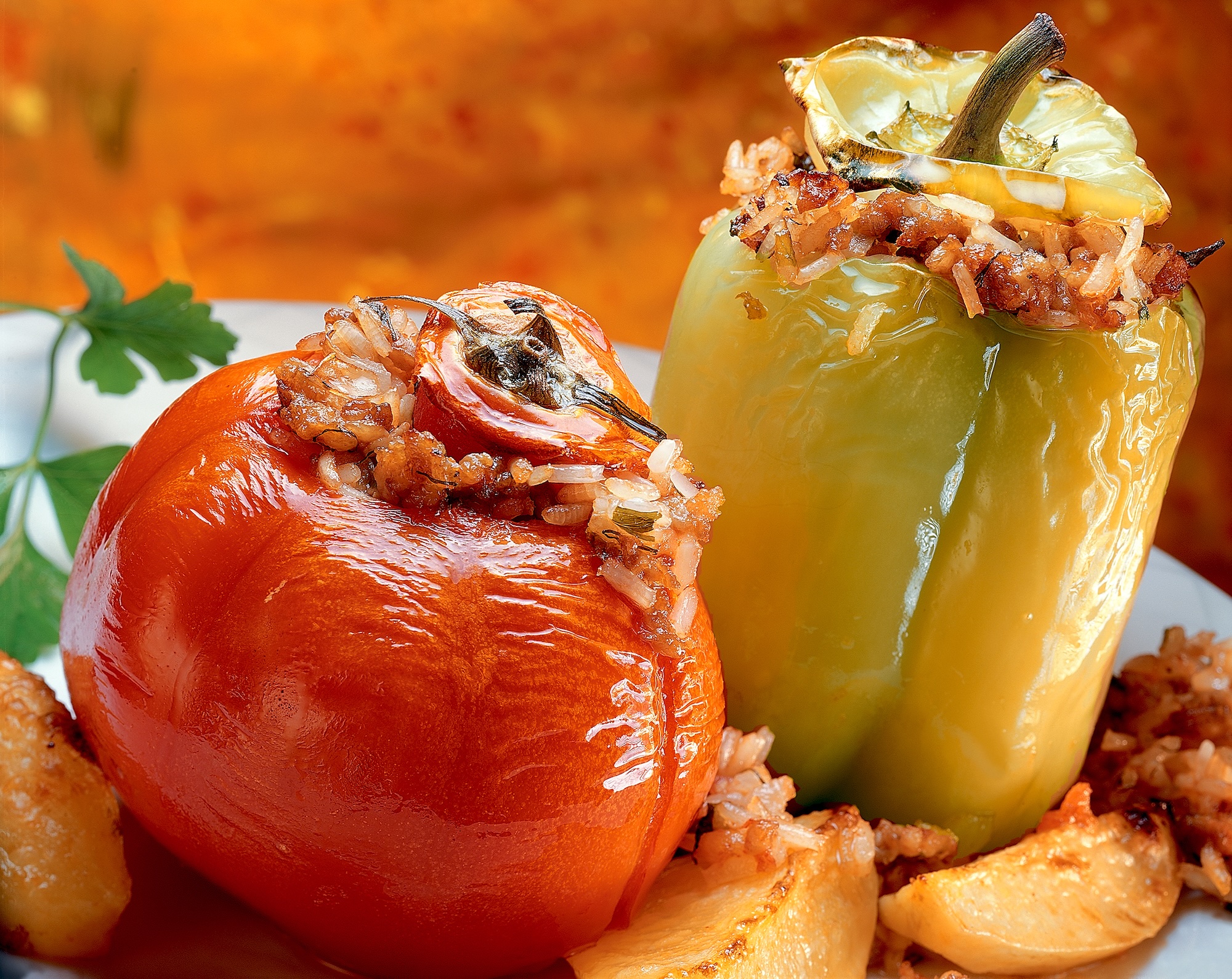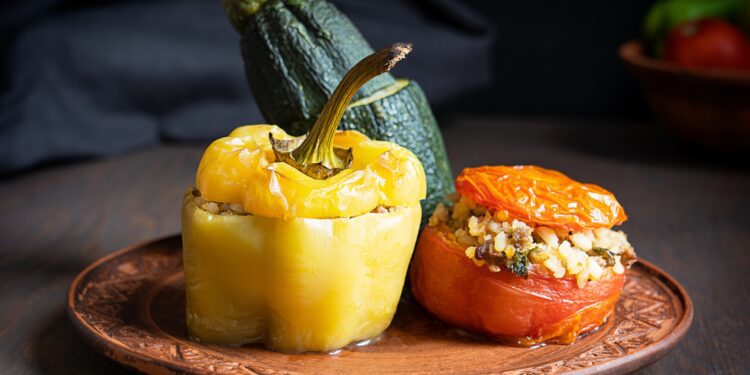Few dishes capture the essence of Greek home cooking like Gemista. This beloved recipe, whose name translates to “stuffed,” features vegetables like tomatoes, peppers, or zucchini filled with a flavorful mix of rice, herbs, and sometimes ground meat. Baked to perfection in a tomato-based sauce, gemista is a dish that brings together simple ingredients, bold flavors, and the warmth of family traditions.
Whether served during a summer gathering or as a comforting winter meal, gemista holds a special place in the hearts of Greeks and visitors alike. Let’s explore the story, preparation, and versatility of this iconic dish.
1. A Dish Rooted in Greek Tradition
Gemista is a cornerstone of Greek cuisine, embodying the Mediterranean ethos of using fresh, seasonal ingredients. The dish dates back to a time when nothing went to waste in the kitchen. Home cooks would hollow out vegetables and fill them with a mixture of rice, herbs, and leftovers, creating a hearty and nutritious meal.
Today, gemista remains a popular dish throughout Greece, found on the menus of traditional tavernas and in nearly every Greek household. While recipes vary slightly by region and family, the dish’s essence—a celebration of fresh produce and bold flavors—remains the same.
2. Key Ingredients and Variations
At its core, gemista is all about the vegetables and the filling. Here’s what makes it special:
Vegetables:
Tomatoes and bell peppers are the most common, but zucchini, eggplants, and even potatoes can also be used. The hollowed-out vegetables serve as edible containers, soaking up the flavors of the filling and sauce as they bake.
The Filling:
The classic gemista filling consists of:
- Rice: Short-grain rice is preferred for its ability to absorb flavors.
- Herbs: Parsley, dill, and mint give the filling its fresh, aromatic character.
- Tomato Puree: Adds moisture and tanginess.
- Optional Meat: Ground beef or pork is often added for a richer, heartier version.
Sauce and Toppings:
The vegetables are baked in a simple tomato sauce, sometimes with olive oil and a splash of water. A drizzle of olive oil and a sprinkle of breadcrumbs or cheese can be added before baking for extra flavor.

3. How to Make Gemista at Home
Making gemista at home is a rewarding experience that fills your kitchen with the comforting aroma of baked vegetables and herbs. Here’s a step-by-step guide:
- Prepare the Vegetables: Wash and hollow out tomatoes, peppers, or other vegetables. Save the tops as “lids” and set aside the insides for the filling.
- Make the Filling: Sauté onions and garlic in olive oil. Add rice, finely chopped vegetable pulp, herbs, and spices. Stir until the mixture is well combined and slightly cooked.
- Stuff the Vegetables: Fill each vegetable with the rice mixture, leaving a little space for the rice to expand. Place the “lids” on top.
- Bake: Arrange the stuffed vegetables in a baking dish, add tomato sauce and olive oil around them, and bake in a preheated oven at 180°C (350°F) for about 60–90 minutes.
- Serve: Let the gemista cool slightly before serving. It’s delicious hot, warm, or even at room temperature.
4. Gemista’s Versatility
One of the reasons gemista is so loved is its versatility:
- Vegetarian Delight: Omit the meat for a classic vegetarian version that highlights the fresh flavors of herbs and vegetables.
- Gluten-Free: Naturally gluten-free, gemista is an excellent option for those with dietary restrictions.
- Seasonal Adaptability: Use whatever vegetables are in season to keep the dish fresh and exciting.
Gemista can be a main course, a side dish, or even part of a meze spread. Pair it with a dollop of Greek yogurt or a simple side salad for a complete meal.
5. Gemista and Greek Hospitality
Gemista is more than just a dish—it’s a symbol of Greek hospitality. The act of filling vegetables and serving them to loved ones reflects the care and warmth of Greek home cooking. It’s a dish that brings people together, whether at a family dinner table or a festive gathering.
Final Thoughts
Gemista is a dish that embodies the heart and soul of Greek cuisine. Its simple ingredients, bold flavors, and comforting nature make it a timeless favorite for Greeks and visitors alike. Whether you’re savoring it in a seaside taverna or recreating it at home, gemista is a true celebration of the Mediterranean’s culinary treasures.
So why not bring a taste of Greece to your kitchen? Gather some fresh vegetables, aromatic herbs, and olive oil, and let the magic of gemista transform your meal into a feast to remember.











